Marble kitchen countertops are a luxurious choice, but are they practical? I asked designers and kitchen experts whether they are form over function
The pros and cons, care tips, and styling advice designers say you need to know

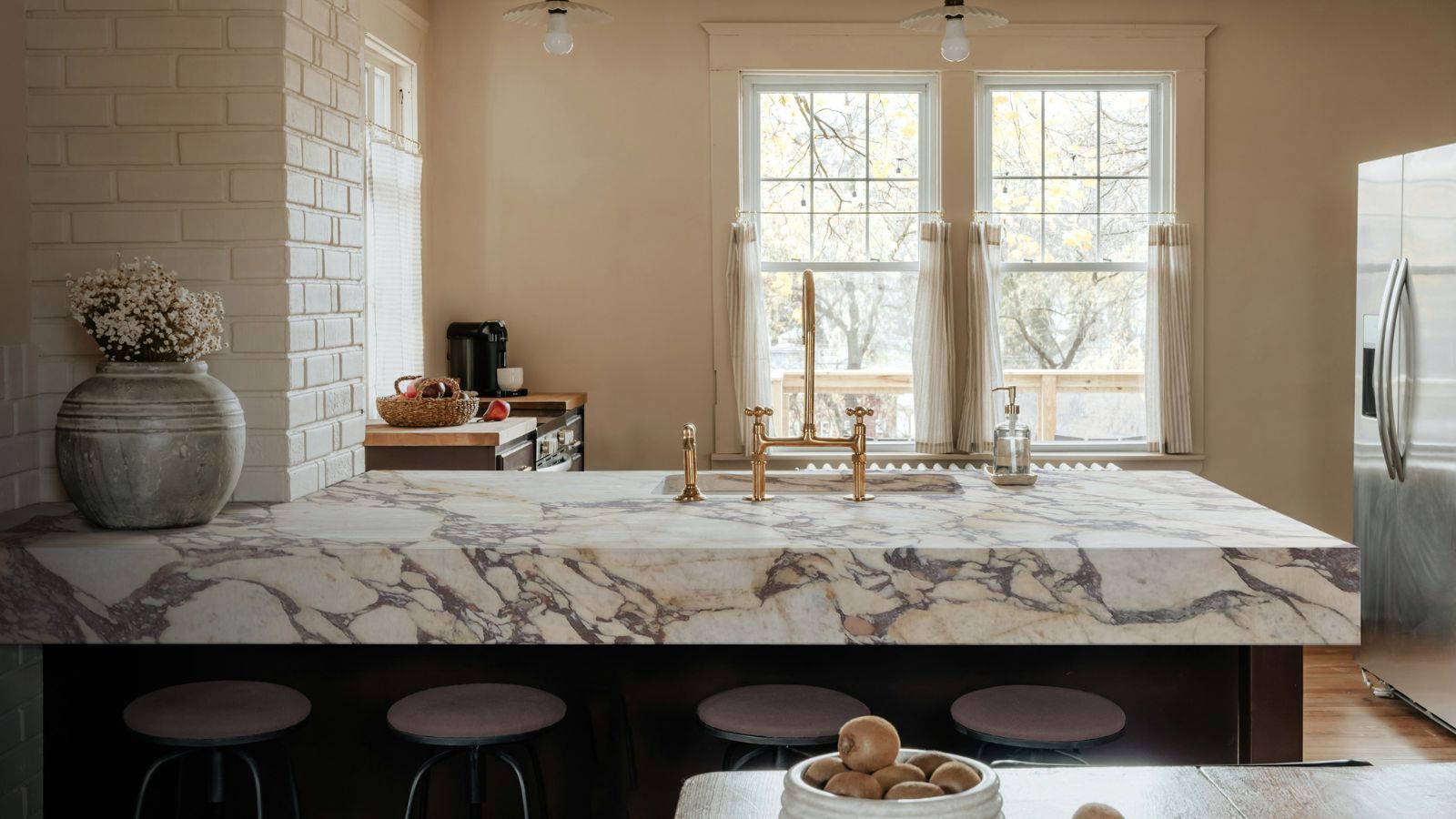
Marble countertops have become the pinnacle of luxury in kitchen design, and for good reason. They are striking, versatile, and can elevate almost any scheme.
This is perhaps why some of the most coveted designs feature kitchen countertops in this natural stone with stunning veined details. But as beautiful as they are, there are a few things you need to know before jumping in with your marble kitchen ideas.
So, we've turned to the experts who have worked with marble time and time again to find out everything you need to know about the luxe countertop material – and how to make sure it's the right choice for your space.
What's the appeal of marble countertops?
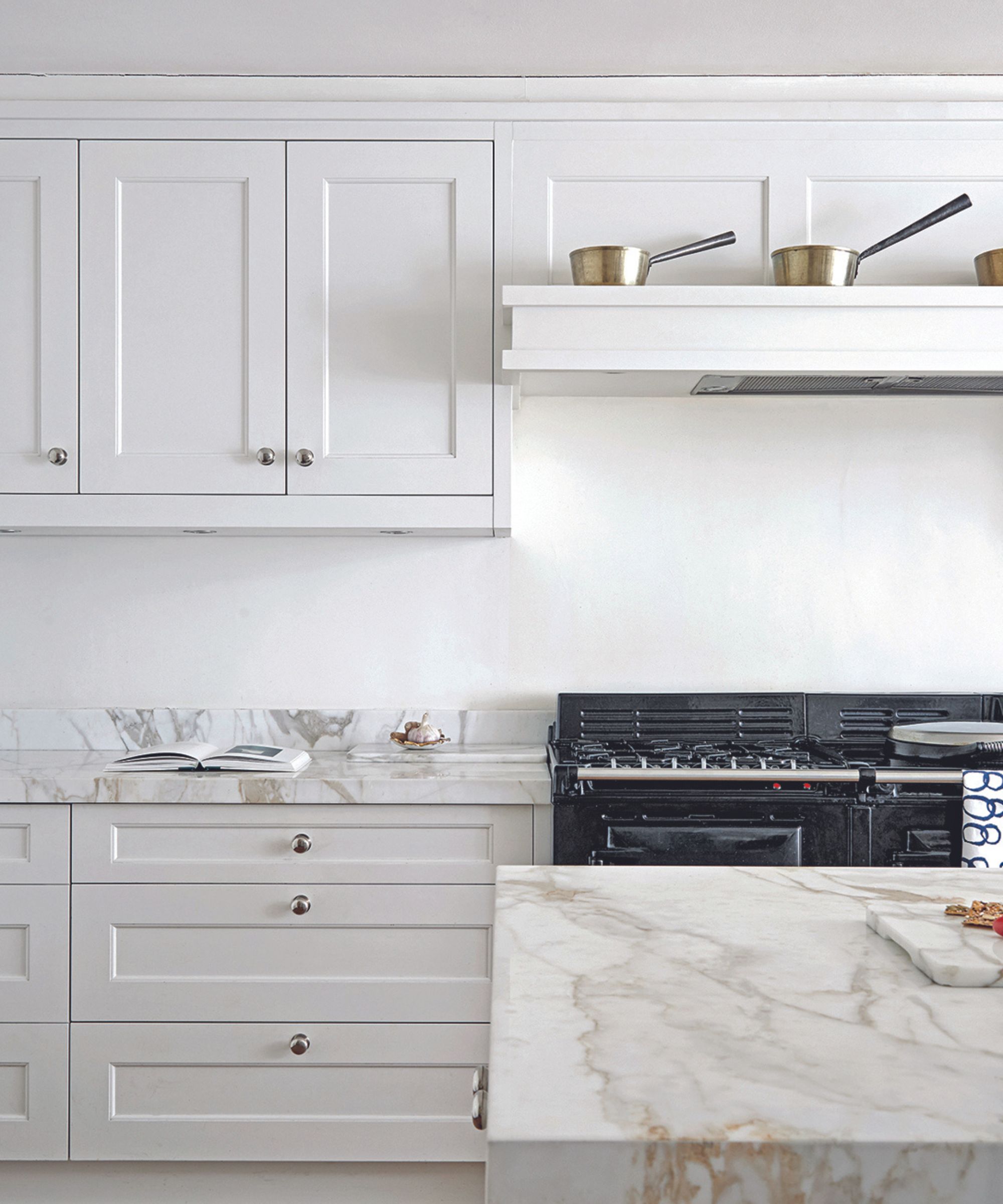
It's clear to see why marble countertops are so coveted. This natural stone offers a unique finish from every cut, while the striking veining creates an eye-catching focal point in any kitchen.
'Marble is an incredibly beautiful, natural material with an organic elegance that’s hard to replicate. Its veining, tone variations, and tactile softness give it a rich, storied quality, full of depth, character, and history,' says interior designer Becky Shea.
'It’s one of the most special and timeless stones available, instantly elevating any space it inhabits. Whether in a modern or traditional kitchen, marble brings a sense of understated luxury and refinement that never goes out of style,' she adds.
Its timelessness and unique appeal are what make marble countertops so desirable, especially as kitchen trends continue to lean toward more personalized interiors with depth and visual interest.
Design expertise in your inbox – from inspiring decorating ideas and beautiful celebrity homes to practical gardening advice and shopping round-ups.
'Each slab is completely individual, giving any kitchen a bespoke feel. Whether you choose classic Carrara or more unusual stones like green marbles or even semi-precious materials, marble brings a sense of natural beauty and sophistication that is hard to replicate,' adds Oliver Webb, director at Cullifords.
What are the benefits of marble countertops?
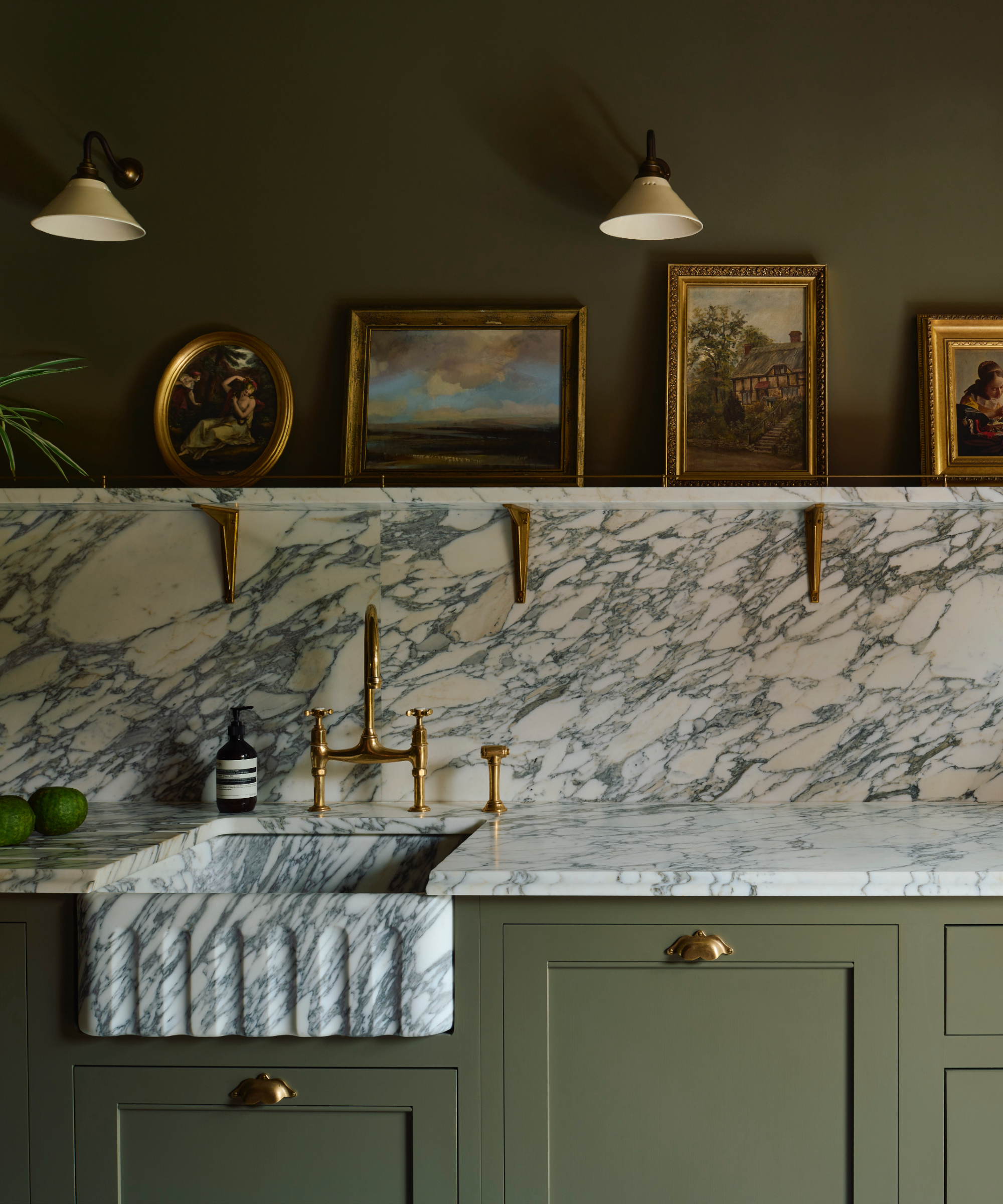
You won't be surprised to find that one of the biggest benefits of marble countertops is its natural beauty – the aesthetic it brings to kitchens of every style can not be overlooked.
'Its natural beauty is definitely at the top of the list. Marble has a timeless, organic elegance that brings warmth and sophistication to any space,' says Becky, who adds that there are more practical benefits, too.
'It’s also an incredibly durable countertop material – when properly sealed and maintained, it can last a lifetime. While it does require a bit of care, its longevity and unique character make it well worth the effort,' she explains.
Oliver agrees, noting that the combination of beauty and performance makes marble countertops a stylish choice. 'It is cool to the touch, making it excellent for tasks like baking,' he says.
'With proper care, it can last for many years and can be re-polished in situ to restore its original finish. It’s also worth noting that despite concerns over staining, marble outperforms many synthetic surfaces and woods in durability, and any stains can be removed with poultices. Plus, marble is a kitchen feature that adds value to a home.'
What are the drawbacks of marble countertops?
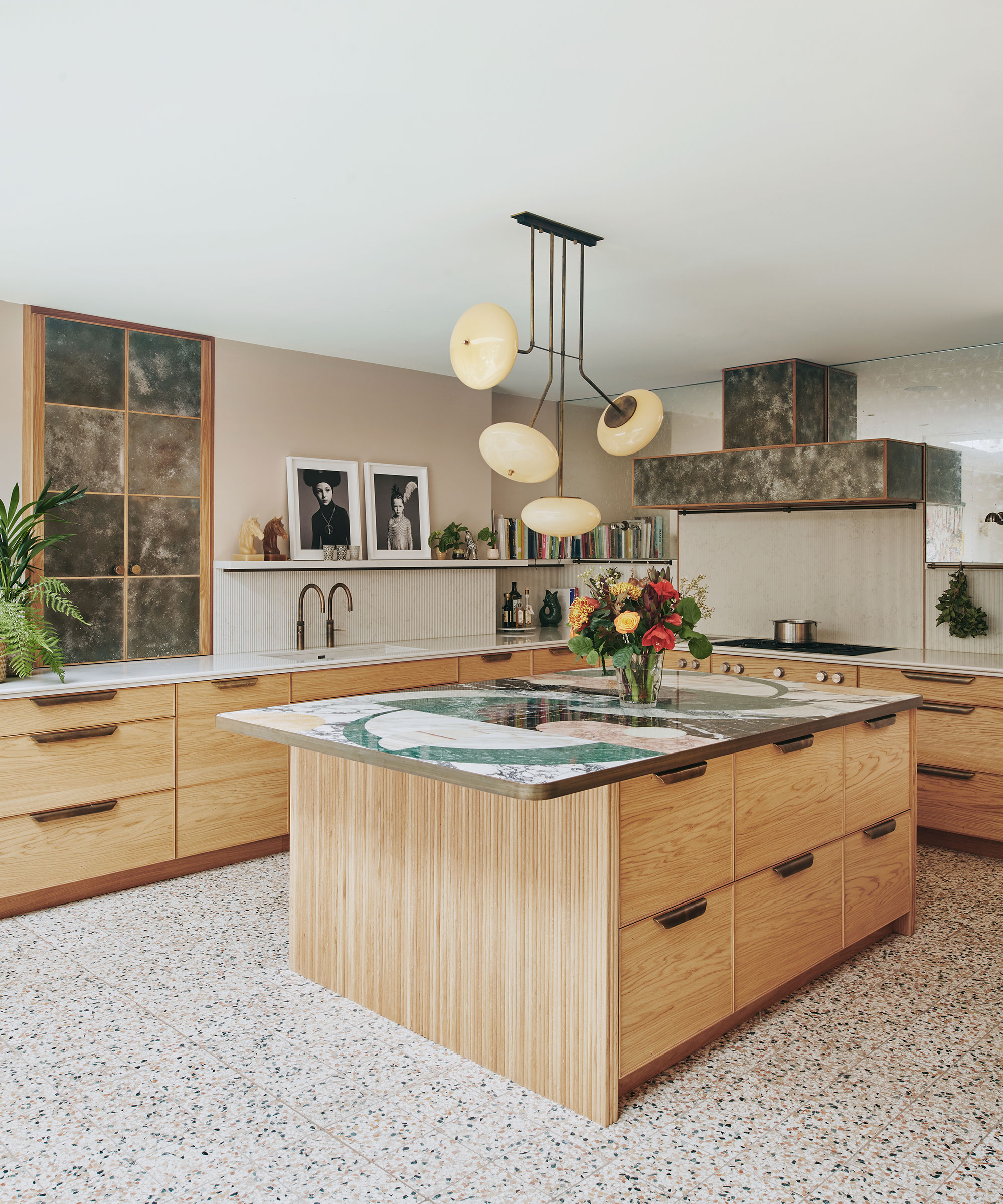
While marble countertops are a favorable choice for kitchen surfaces, there are some drawbacks that are typical of a more natural stone. And most of them are a result of not keeping up with the necessary maintenance.
'If not properly cared for, marble can be prone to scratching, staining, and water marks. It’s a softer, more porous stone, so it requires a bit more attention than other surfaces,' says Becky.
'That said, like anything of value, taking good care of it helps preserve its beauty and extend its life. With the right maintenance, marble can age gracefully and develop a patina that many find even more beautiful over time,' she adds.
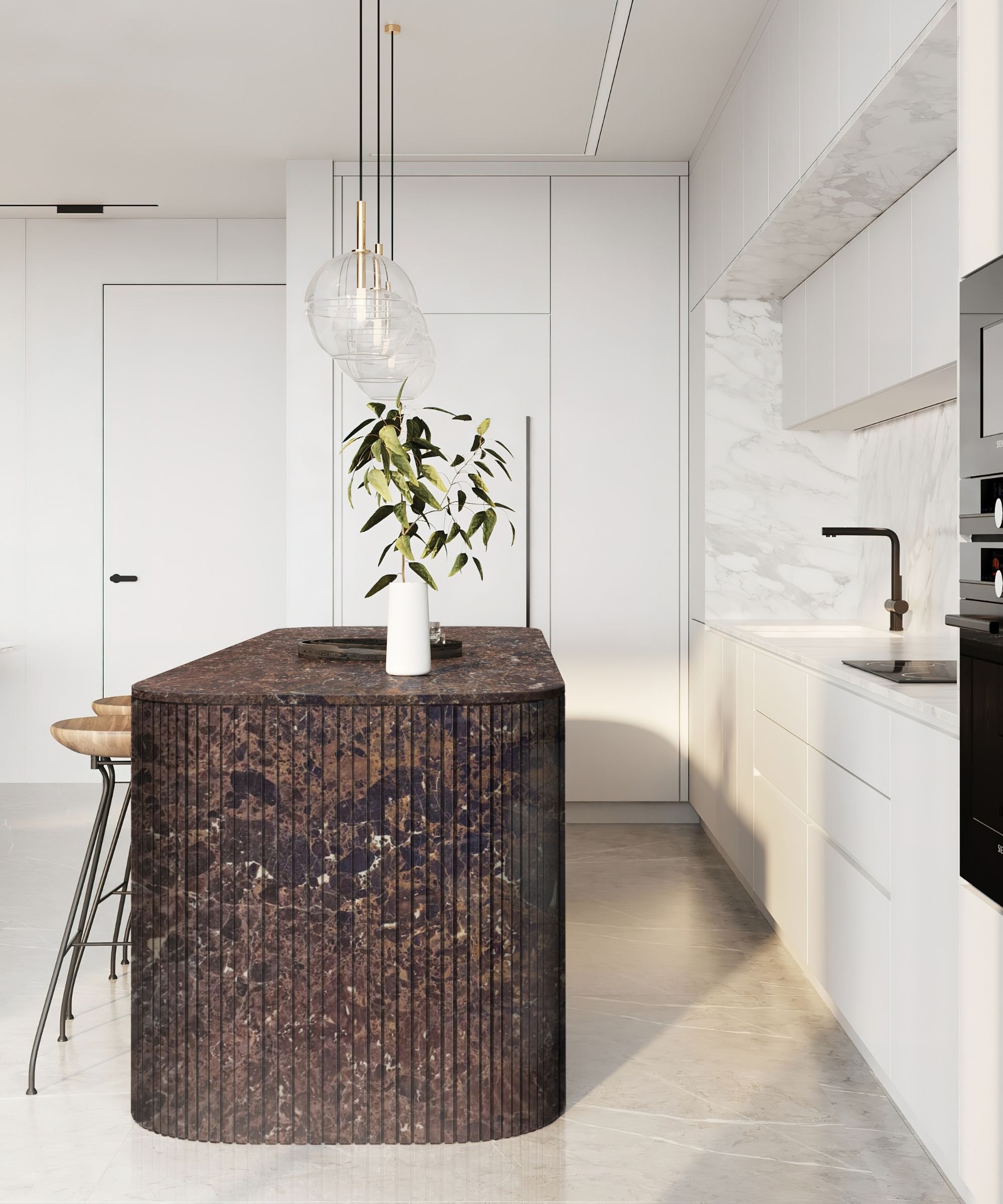
As it's a natural material, marble will naturally age over time, unlike man-made alternatives that stay pristine for longer. However, many designers say this natural wear and aging is a lovely feature.
'Over time, marble will develop a patina, which many see as part of its charm, but others may find less desirable. Some marbles are softer than others, so performance can vary slightly between types,' explains Oliver.
This is something to consider when choosing your kitchen countertop material. If you don't like that natural patina, you probably won't like the way your marble countertops look after a few years, so it's best to go for a man-made alternative like porcelain countertops.
How to care for marble countertops
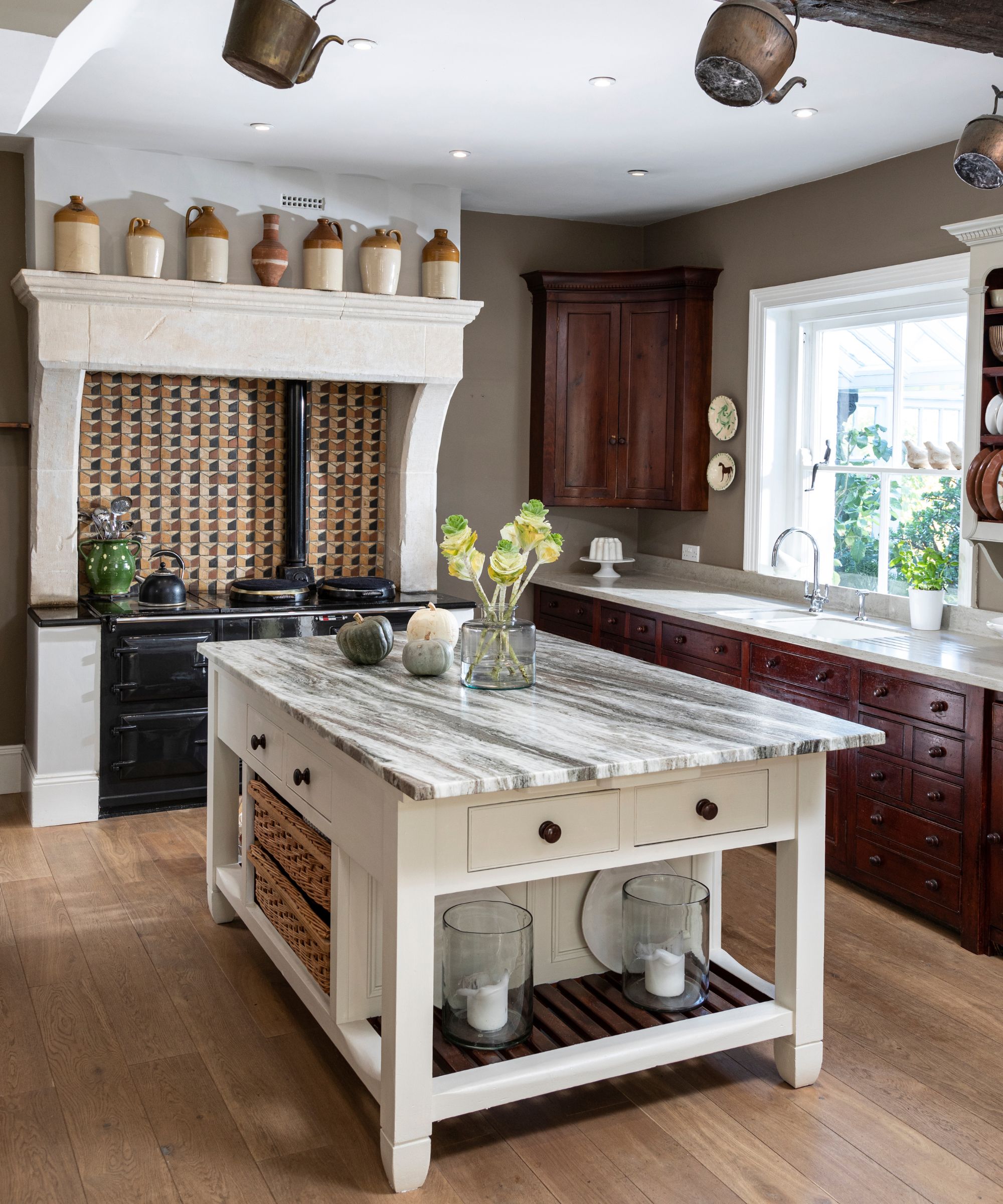
If you do want marble countertops, you need to be prepared to commit to the maintenance and upkeep that they require to stay looking and performing their best. 'Marble requires a bit more upkeep than other surfaces, so it’s important to go in with realistic expectations,' says Becky.
'Daily wipe-downs (often multiple times a day), always using coasters and pot holders, and being diligent about using a cutting board – especially when working with oils like olive oil – are essential to prevent staining and etching,' she explains.
Knowing how to clean marble surfaces, and doing it regularly is key. 'While sealed marble is more resistant to stains, no stone is completely stain-proof, so spills should be cleaned up quickly,' says Oliver, who recommends using 'light soapy water' and 'avoiding harsh chemicals' if you want to keep them in beautiful condition overtime.
Have a few cleaning supplies kept aside that you use solely to clean your marble countertops to ensure you don't risk mixing in any unwanted ingredients or chemicals. Refillable options, like these amber glass spray bottles, and a microfibre cleaning cloth are all you need.
'The good news is that any damage can be repaired – stains can be removed with a poultice, and the surface can be re-polished as needed. We always recommend taking samples home to get a feel for how the material works in your space,' he adds.
To keep your marble countertops in the best condition possible, Becky recommends consulting professionals on occasion to help with the upkeep. 'It’s important to have your marble professionally resealed every 3–5 years. Superficial scratches can typically be buffed out, so when it’s time to reseal, it’s a good opportunity to have your fabricator give the surface a light polish to restore its finish.'
How to style marble countertops
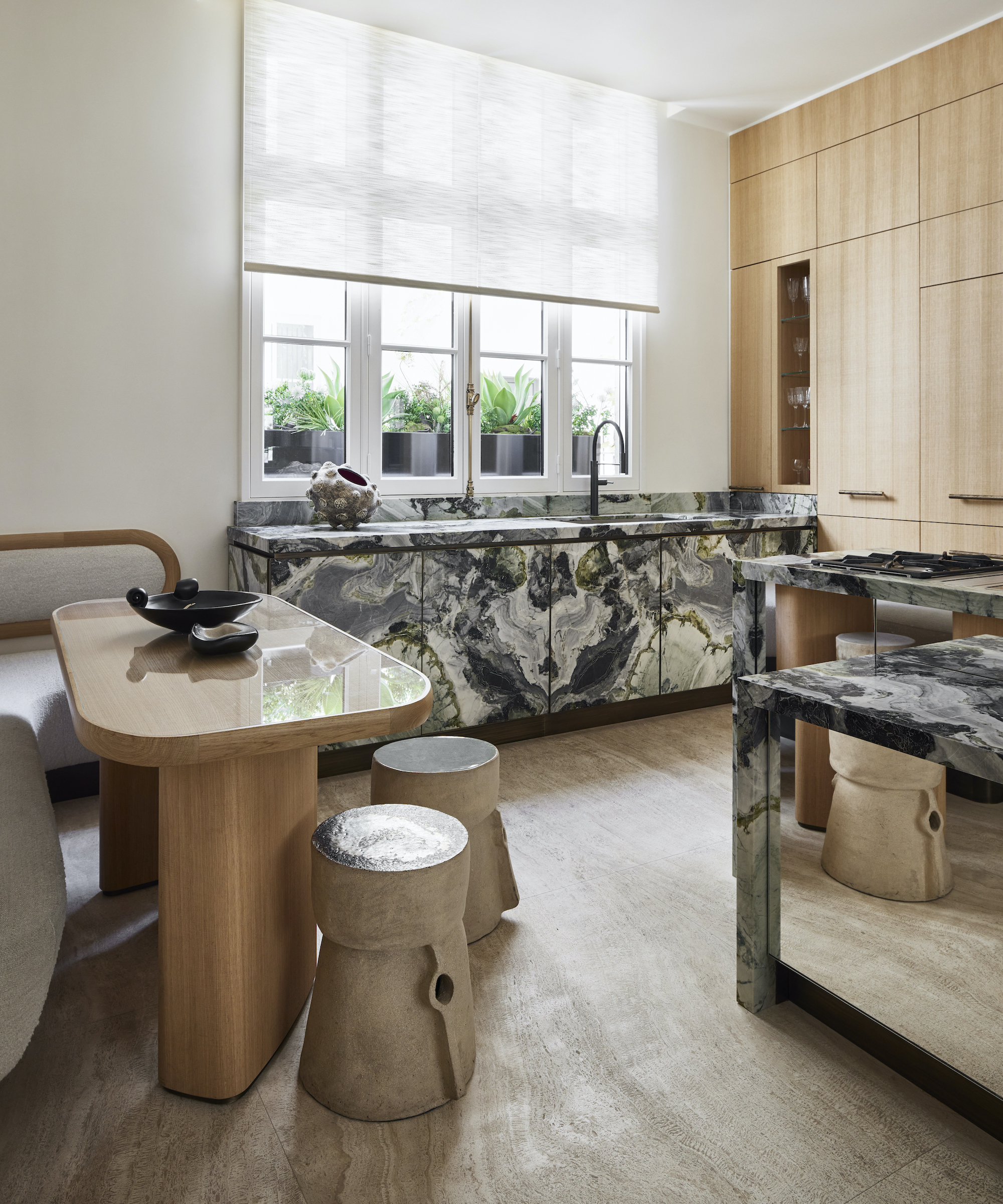
The beauty of marble countertops is that they can tie into almost any interior design style. From modern to traditional, Victorian to country kitchens of every region, there are so many ways to style them into a scheme.
'I think beautifully crafted stain-grade millwork pairs exceptionally well with marble. There’s something so special about placing two natural, organic materials side by side,' says Becky.
'The contrast between the smooth, veined stone and the warmth and texture of wood creates a striking, balanced harmony. It’s one of the most timeless and elegant combinations you can use in a kitchen
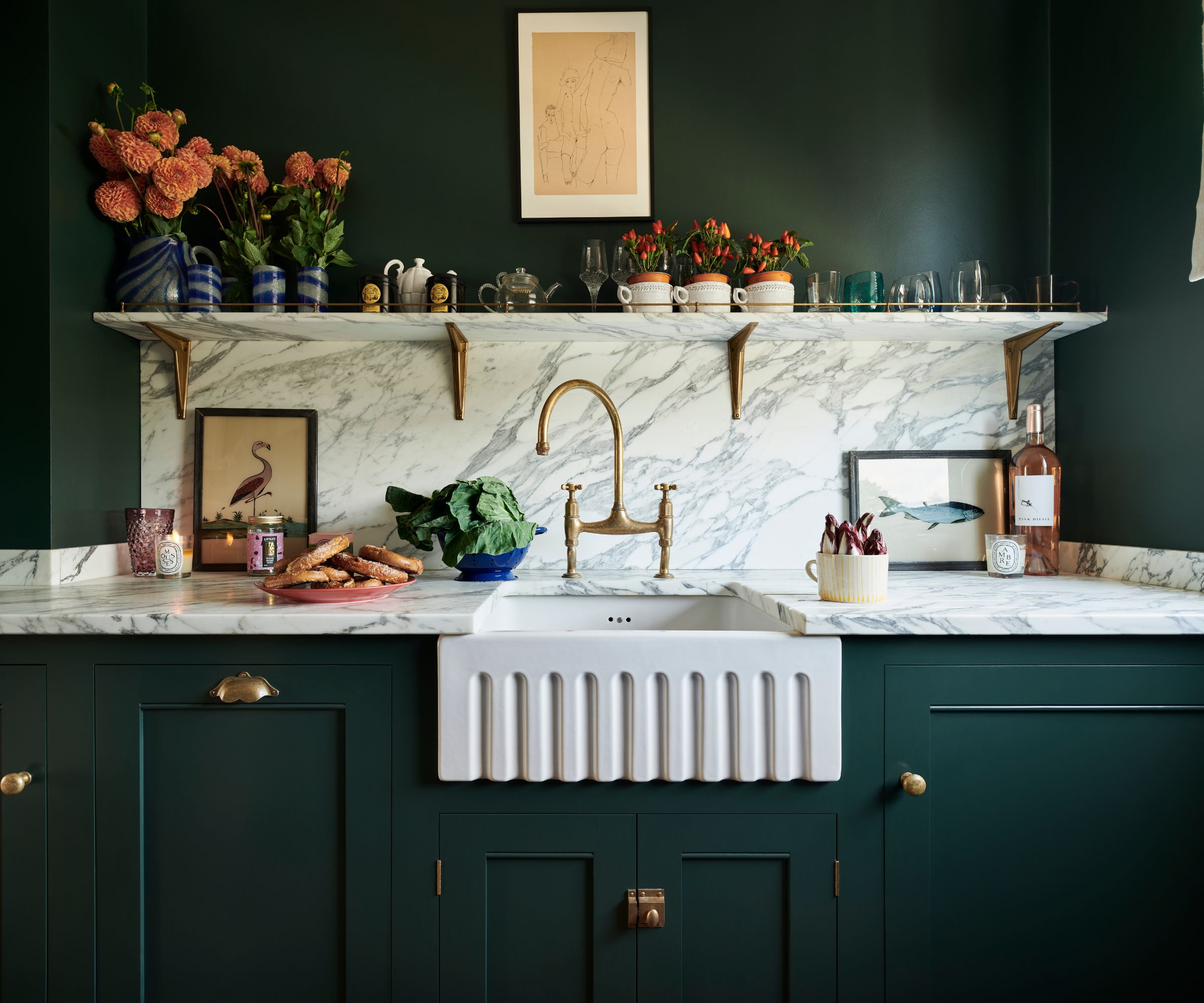
Wooden kitchens have been enjoying a revival this year thanks to their timeless appeal and ability to add warmth to a scheme, so the two natural materials feel like the perfect kitchen pairing.
If you prefer a painted scheme, marble countertops can work well with so many colors, made better if you choose marble with veining that matches the rest of your kitchen color ideas.
'Marble looks stunning alongside natural wood or painted kitchen cabinetry, especially in soft greys, whites or deep blues,' says Oliver. 'Brass or matte black fixtures complement marble’s luxurious feel, and natural stone floors or hardwood can enhance its warmth and texture.'
It's clear to see why so many designers are fans of decorating with marble in the kitchen. It's timeless, striking, and versatile. But marble countertops are not for the faint-hearted, so make sure you're prepared for the upkeep before you invest.
But the required maintenance doesn't take away from their beauty and the ability to create a unique scheme. There are so many kitchen colors that go with a marble countertop, so you can create a design that perfectly reflects your style.

I’ve worked in the interiors magazine industry for the past five years and joined Homes & Gardens at the beginning of 2024 as the Kitchens & Bathrooms editor. While I love every part of interior design, kitchens and bathrooms are some of the most exciting to design, conceptualize, and write about. There are so many trends, materials, colors, and playful decor elements to explore and experiment with.